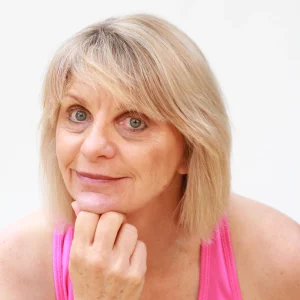training
Top Tips For Training Older Adults

I ask my clients: “What’s your dream for retirement? Do you have travel plans? Do you want to be the best grandparent ever, and play with your grandchildren? Do you want to be a really good golfer, or participate in outdoor sports that interest you like bushwalking, dragon boating? Or do you have some other thing on your bucket list?”
It’s important for those aged over 65 to have enough money to retire, but it’s more important to have your health. And if you’re feeling unwell now, how are you going to feel in 10 years’ time?
Following are four tips to help you train the older adults in your community, so they can stay young and independent for as long as possible.
TIP 1. IT’S NOT ALL ABOUT THE EXERCISE
For this population, staying motivated to continue to train may require more than just a professional exercise program. For example:
Friendships and social connectedness
Make sure that your clients have a buddy and get to know all other participants in the class.
Fun
Don’t be so serious with your classes; after all, laughter is the best medicine! Allow and encourage a little banter in class.
Games
Try adding some games in your class. Use balls, balloons, pool noodles, ladders or hurdles. A little competition is great but remember, not everyone is competitive.
Music
Human beings synchronise naturally, so try adding some simple dances to choreography or maybe boxing with repetitive moves. Some fun songs are: “YMCA”, “La Macarena’’, the “Shoop Shoop” song, “Jump” or the “Time Warp” from The Rocky Horror Picture Show.
Social
Holding a coffee catch-up after class gives your participants the opportunity to talk about, not only the challenges in their lives, but the great things.
Cognition
Although most participants are not willing to come straight out and talk about it, many of them may feel worried about dementia, Alzheimer’s and cognitive decline. Introduce games and skills where clients can improve their cognition, or at least reduce the rate of decline.
Positivity
The Dalai Lama said, “Choose to be optimistic, it feels better”. Even though there has been a lot of doom and gloom with bushfires and COVID in 2020, it’ s important to believe that it’s better to be positive than negative. Enter each class with a smile and offer empathy – your class may be the highlight of your participant’s day.
TIP 2. NOT ALL OLDER ADULTS WANT TO TRAIN IN A GYM
For older adults, it may be worth considering where the best place is to deliver an exercise session. Keep in mind:
- you must make the participants feel comfortable in their surroundings, so asking someone to train straight after a young sweaty man, may not be inviting for some
- the space should be safe, clean and secluded
- community halls are often suitable if you don’t use too much equipment.
TIP 3. SEEK OUT OPPORTUNITIES IN YOUR COMMUNITY
As more of our population live to an older age, and more Retirement Villages and independent living facilities develop, there are ever-growing opportunities to work with this demographic. For example:
- You may be able to work for the institution and deliver classes within their facility.
- It’s possible to have clients come to you for training/appropriate classes, who can fall into the normal payment structure.
- You may be able to work with your local council or state’s health department to provide physical activity classes.
- Working alongside a not-for-profit organisation may enable you to facilitate physical activity sessions that would provide many benefits for the group (e.g., dementia, depression, Parkinson’s disease).
And keep in mind that grants/funding may be available to support the delivery of some of the above.
TIP 4. SOME OLDER ADULTS PREFER TO TRAIN IN THE WATER
Aqua classes have become increasingly popular with clients who suffer from arthritis or other conditions where weight-bearing can be challenging. Water-based classes can include hydrotherapy, bootcamp-style or even dance classes, depending on the wishes of your participants or group.
Aqua classes often have a very high attendance rate and the participants are typically very loyal. This may well be related to the fact that water-based aerobic exercise has been shown by many studies to be highly effective at reducing pain for patients with arthritis and populations with disabilities; as well as improving flexibility, strength and balance disorders, while also having a significant positive psychological effect.
It’s never too late to start introducing fitness into one’s life, and while we may all be ageing, becoming old is optional. Success simply lies in putting in the required effort to improve fitness levels and gain the rewards of being healthy and well – for the long term. Often these “rewards” come by way of “functional fitness” (i.e., having the physical ability to easily perform a function). Functional fitness is a gift to you and your family; however, effort is needed to maintain the strength, vitality and vibrancy required for such abilities.
As Mahatma Ghandi said, “It is health that is the real wealth, not pieces of gold and silver.” ®


Nancy Casu
Nancy Casu is a FITREC DNA Ambassador. She specialises in training older adults to stay young and independent and is the author of Older Fitter Better. Learn more at www.olderfitterbetter.com